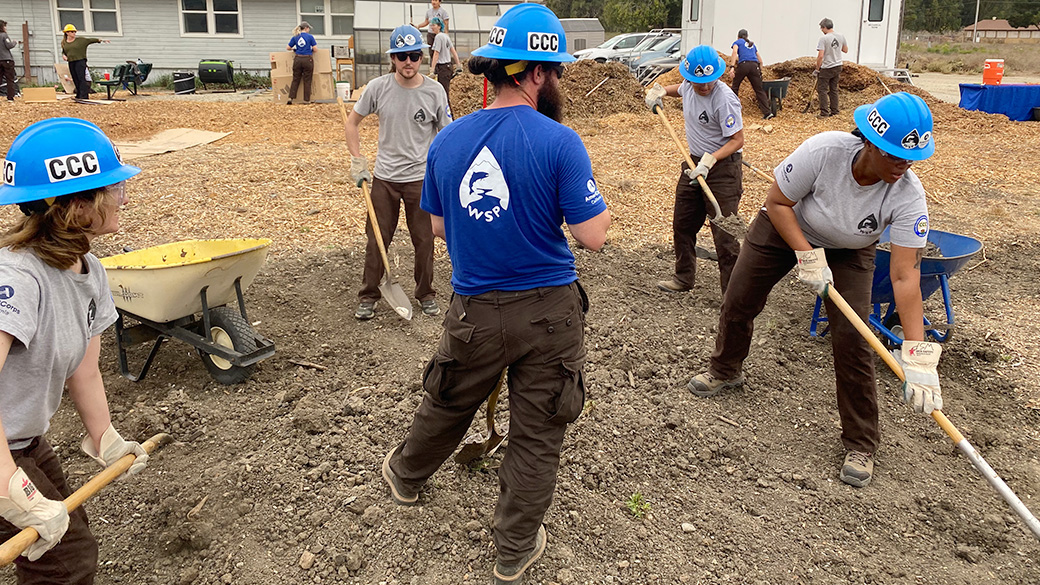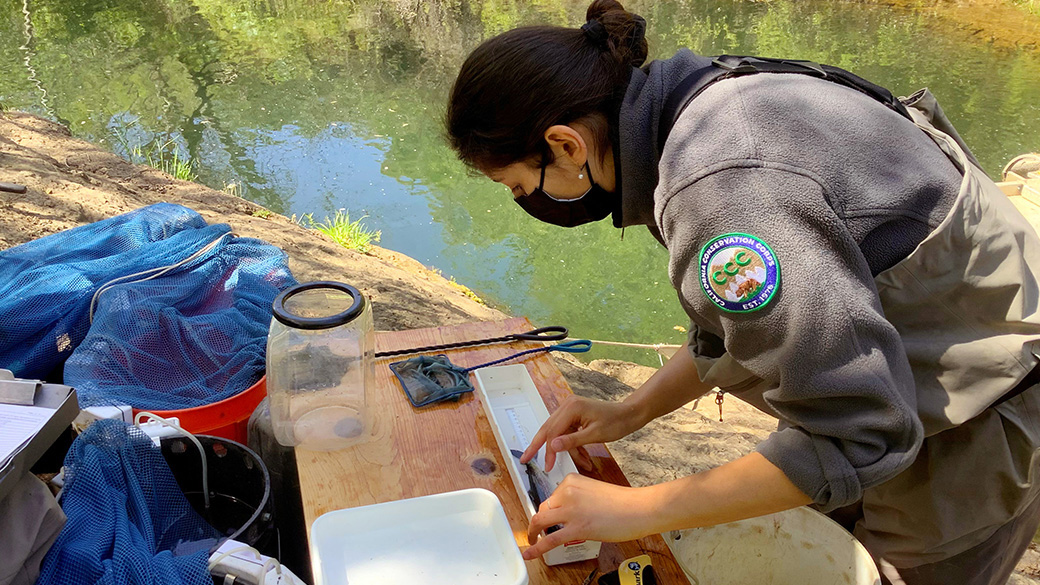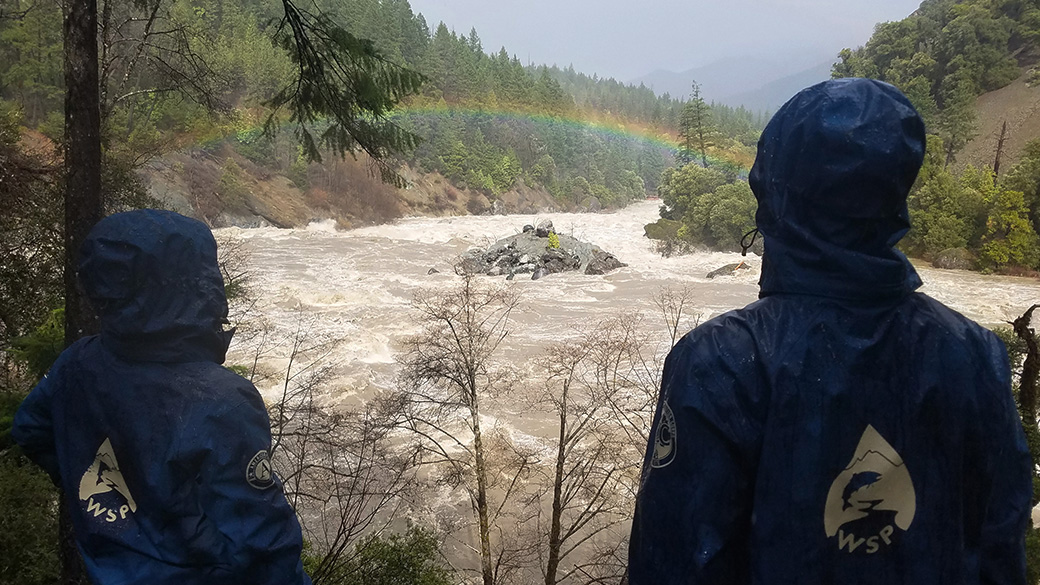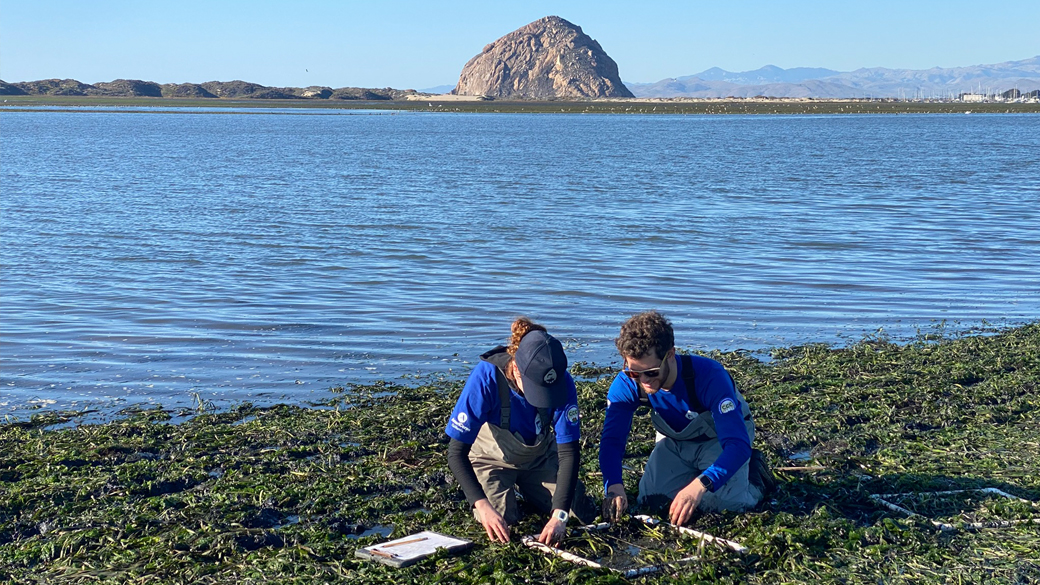Watershed Stewards Program
Watch our informational video!
Learn how you can make a difference for fish species and local watersheds.
Gear UP
Each day, Corpsmembers gear up to make the world a better place. Check out what tools they use to make a splash in the WSP Program!
Know Before You Go
Application Process
View our application timeline to get an idea of the steps involved to becoming a Corpsmember and Team Leader.
Benefits
Corpsmembers may earn scholarships, receive heath insurance, qualify for childcare subsidies, and more!
Eligibility
Young adults, 18-32, can join WSP. Individuals must live in California and have a high school diploma.
Explore our locations
CCC’s Watershed Stewards Program has two regional offices located in Eureka (Region 1) and San Luis Obispo (Region 2).
Each Year WSP partners with approximately 20 environmental organizations throughout California to support and mentor Corpsmembers. Placement sites are determined through an annual application process and may vary from year to year.
District A - Team Leader
Watershed Stewards Program
Eureka Office
3517 W Street
Eureka, CA 95501
Read More
CDFW - Yreka
California Department of Fish & Wildlife
Yreka Field Office
1625 South Main Street
Yreka, CA 96097
Yurok Tribe
CDFW - Arcata
Bureau of Land Management Arcata Field Office
District B - Team Leader
Watershed Stewards Program
Eureka Office
3517 W Street
Eureka, CA 95501
Read More
CDFW - Eureka
California Department of Fish & Wildlife
Eureka Field Office
619 Second Street
Eureka, CA 95501
CDFW - CWPAP
California Department of Fish & Wildlife
Coastal Watershed Planning and Assessment Program and Southern Humboldt and Northern Mendocino Counties Fisheries Management
1487 Sandy Prairie Court, Suite A
Fortuna, CA 95540
Eel River Watershed Improvement Group
Eel River Watershed Improvement Group (ERWIG) and California Conservation Corps Fortuna Center
1500 Alamar Way
Fortuna, CA 95540
Point Reyes National Seashore
Marin Water Fisheries Program
Team Leader - District C
San Francisco Estuary Institute
Grassroots Ecology
U.S. Fish & Wildlife - Lodi
San Francisco Regional Water Quality Control Board
San Francisco Regional Water Quality Control Board
1515 Clay Street #1400
Oakland, CA 94612
Team Leader - District D
NOAA Southwest Fisheries
National Oceanic and Atmospheric Administration (NOAA)
Southwest Fisheries Science Center
110 McAllister Way
Santa Cruz, CA 95060
Central Coast Wetlands Group
Central Coast Wetlands Group (CCWG)
Moss Landing Marine Labs
8272 Moss Landing Road
Moss Landing, CA 95039
San Luis Obispo Steelhead Initiative
CDFW - Santa Barbara
California Department of Fish & Wildlife (CDFW) Santa Barbara and The Ojai Valley Land Conservancy (OVLC)
CDFW Office (on map):
1933 Cliff Drive Suite #9
Santa Barbara, CA 93109
OVLC Office:
370 Baldwin Road, Bldg. A4
Ojai, CA, 93023
Resource Conservation District of the Santa Monica Mountains
Resource Conservation District of the Santa Monica Mountains
4505 Las Virgenes Road Suite 215
Calabasas, CA 91302
Meet the WSP TEam
See Our Impact
For more than 30 years, WSP has made a difference in California communities!
1,538
WSP Corpsmembers Engaged
90
Organizational Partners
56,901
Students Instructed
34,003
Community Volunteers Engaged
2,025
Watershed Awareness Volunteer Events (WAVEs) Developed
7,000
Acres Annually Inventoried
Ask Us Anything
We know you have questions about the Watershed Stewards Program. Below are some of the common one’s we get. Additional information is also in our WSP Frequently Asked Questions Document. Have more questions? Email us!
Contact Us
What are desirable WSP applicant traits?
- Comfortable working 40 hours/ week, in rough terrain and inclement weather
- Flexible to changing work schedule and tasks
- Effectively collaborates within a team
- Knowledge of watershed science, fisheries, and/or restoration
- Comfortable working around streams
Do I need to turn in all my application materials at the same time?
No – applicants will use WSP’s JotForm to complete their application and upload their cover letter and one-page resume. They must email their Letters of Recommendation to WSP.Recruiter@ccc.ca.gov by June 30th at the latest.
What kind of activities do WSP Corpsmembers do?
During their service, WSP Corpsmembers may participate in a wide array of activities, including:
- Field surveys of spawning grounds, habitat, or wildlife
- Riparian restoration including native species planting and invasive species removal
- Data entry and analysis
- Trapping of juvenile or adult fish for counting and measurement
- Computer modeling of natural resource data
- Designing in-stream projects
- Helping to remove fish passage barriers (dams, culverts)
- Teaching the Wonders of Watersheds (WOW!) curriculum in elementary classrooms in underserved communities
- Engaging their service community in watershed outreach and education
- Creating and implementing their own Watershed Awareness Volunteer Events (WAVE) and recruiting community volunteers to complete a restoration project
- Training, networking, and professional development opportunities
Am I required to have a car?
Yes & No – Depending on the Placement Site location, it is strongly suggested you have a vehicle. Housing and services are often a distance from Placement Sites and public transport is not always available. Some Placement Sites require Corpsmembers to use their personal vehicle for field work (they will be reimbursed).
Read Our News
The CCC Watershed Stewards Program is getting ready for its 32nd season. Applications for Corpsmembers are open until June 30.




